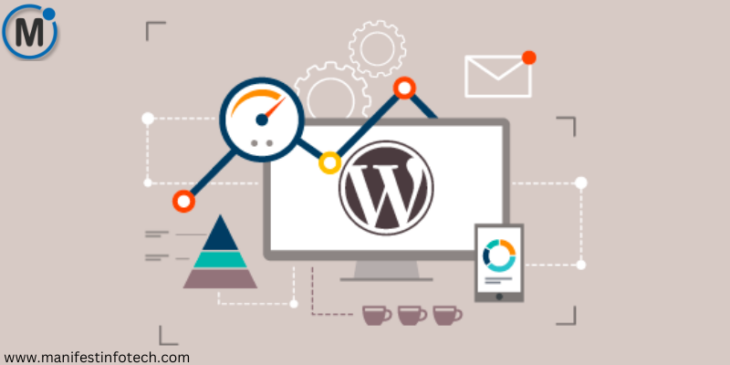
In this guide, we’ll explore essential optimization techniques to enhance your WordPress website’s speed, security, and overall performance.
𝟏. 𝐂𝐡𝐨𝐨𝐬𝐞 𝐚 𝐑𝐞𝐥𝐢𝐚𝐛𝐥𝐞 𝐇𝐨𝐬𝐭𝐢𝐧𝐠 𝐏𝐫𝐨𝐯𝐢𝐝𝐞𝐫:
– Opt for a reputable hosting provider that offers excellent uptime, fast server response times, and robust security features.
– Consider managed WordPress hosting for specialized support and performance optimization tailored to WordPress sites.
𝟐. 𝐔𝐭𝐢𝐥𝐢𝐳𝐞 𝐚 𝐋𝐢𝐠𝐡𝐭𝐰𝐞𝐢𝐠𝐡𝐭 𝐓𝐡𝐞𝐦𝐞:
– Select a lightweight and well-coded theme to ensure faster loading times and better performance.
– Avoid bloated themes with excessive features and functionalities that can slow down your website.
𝟑. 𝐈𝐧𝐬𝐭𝐚𝐥𝐥 𝐄𝐬𝐬𝐞𝐧𝐭𝐢𝐚𝐥 𝐏𝐥𝐮𝐠𝐢𝐧𝐬:
– Use plugins strategically to add necessary features while minimizing bloat.
– Essential plugins include caching plugins (e.g., WP Rocket, W3 Total Cache) for optimizing website speed, security plugins (e.g., Wordfence, Sucuri) for protecting against threats, and SEO plugins (e.g., Yoast SEO, Rank Math) for optimizing search engine visibility.
𝟒. 𝐎𝐩𝐭𝐢𝐦𝐢𝐳𝐞 𝐈𝐦𝐚𝐠𝐞𝐬:
– Compress images to reduce file size without compromising quality using plugins like Smush or Imagify.
– Implement lazy loading to defer offscreen images, reducing initial page load times.
𝟓. 𝐄𝐧𝐚𝐛𝐥𝐞 𝐁𝐫𝐨𝐰𝐬𝐞𝐫 𝐂𝐚𝐜𝐡𝐢𝐧𝐠:
– Leverage browser caching to store website data locally on visitors’ devices, reducing load times for returning visitors.
– Use caching plugins to enable browser caching and improve website performance.
𝟔. 𝐈𝐦𝐩𝐥𝐞𝐦𝐞𝐧𝐭 𝐂𝐨𝐧𝐭𝐞𝐧𝐭 𝐃𝐞𝐥𝐢𝐯𝐞𝐫𝐲 𝐍𝐞𝐭𝐰𝐨𝐫𝐤 (𝐂𝐃𝐍):
– Utilize a CDN to distribute website content across multiple servers worldwide, reducing latency and improving loading times for users across different geographical locations.
– Popular CDN services include Cloudflare, Amazon CloudFront, and StackPath.
𝟕. 𝐎𝐩𝐭𝐢𝐦𝐢𝐳𝐞 𝐃𝐚𝐭𝐚𝐛𝐚𝐬𝐞:
– Regularly clean up and optimize your WordPress database to remove unnecessary data and improve site performance.
– Use plugins like WP-Optimize or WP-Sweep to automate database optimization tasks.
𝟖. 𝐒𝐞𝐜𝐮𝐫𝐞 𝐘𝐨𝐮𝐫 𝐖𝐞𝐛𝐬𝐢𝐭𝐞:
– Ensure your WordPress site is secure by keeping themes, plugins, and WordPress core up to date.
– Implement security best practices such as using strong passwords, enabling two-factor authentication, and limiting login attempts.
𝟗. 𝐌𝐨𝐧𝐢𝐭𝐨𝐫 𝐖𝐞𝐛𝐬𝐢𝐭𝐞 𝐏𝐞𝐫𝐟𝐨𝐫𝐦𝐚𝐧𝐜𝐞:
– Use tools like Google PageSpeed Insights, GTmetrix, or Pingdom to regularly monitor your website’s performance and identify areas for improvement.
– Analyze performance metrics such as page load time, server response time, and overall page size.
𝟏𝟎. 𝐑𝐞𝐠𝐮𝐥𝐚𝐫𝐥𝐲 𝐁𝐚𝐜𝐤𝐮𝐩 𝐘𝐨𝐮𝐫 𝐖𝐞𝐛𝐬𝐢𝐭𝐞:
– Set up automated backups of your WordPress site to ensure you can quickly restore your website in case of any unforeseen issues or security breaches.
– Choose reliable backup plugins or services that offer regular backups and easy restoration options.
If you are looking for any services related to Website Development, App Development, Digital Marketing and SEO, just email us at nchouksey@manifestinfotech.com or Skype id: live:76bad32bff24d30d
𝐅𝐨𝐥𝐥𝐨𝐰 𝐔𝐬:
𝐋𝐢𝐧𝐤𝐞𝐝𝐢𝐧: linkedin.com/company/manifestinfotech
𝐅𝐚𝐜𝐞𝐛𝐨𝐨𝐤: facebook.com/manifestinfotech/
𝐈𝐧𝐬𝐭𝐚𝐠𝐫𝐚𝐦: instagram.com/manifestinfotech/
𝐓𝐰𝐢𝐭𝐭𝐞𝐫: twitter.com/Manifest_info
#WordPressOptimization #WordPressTips #WordPressPerformance #WordPressWebsite #WebsiteOptimization #WebsitePerformance #WebsiteSpeed #WebsiteSecurity #WordPressPlugins #WordPressThemes #WordPressHosting #WebDevelopment #SEO #CDN #PageSpeed #WebsiteMaintenance #DigitalMarketing #OnlinePresence #TechTips #WebDesign